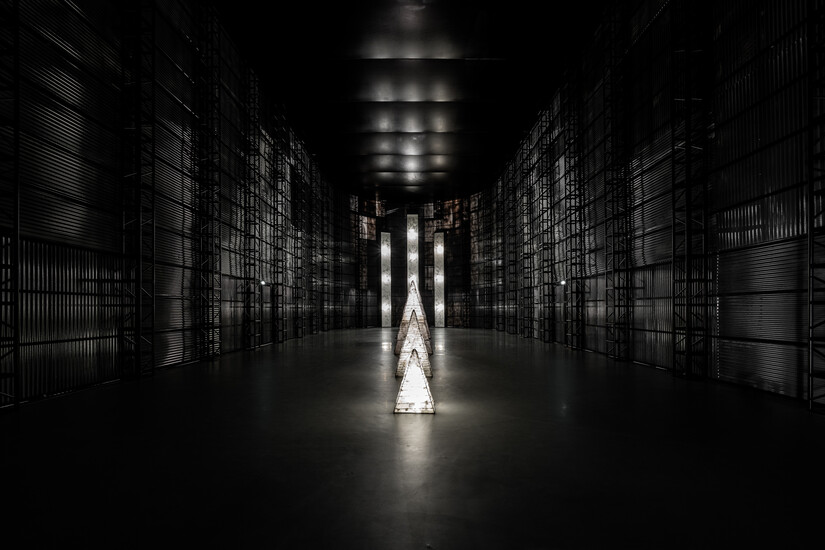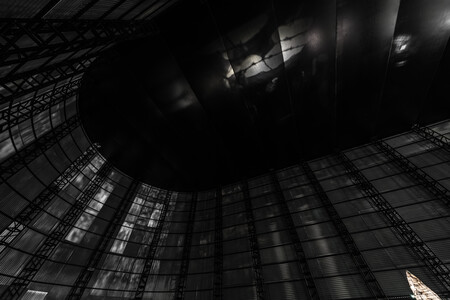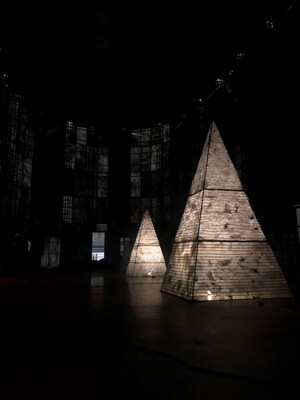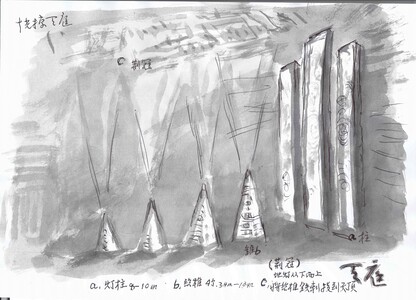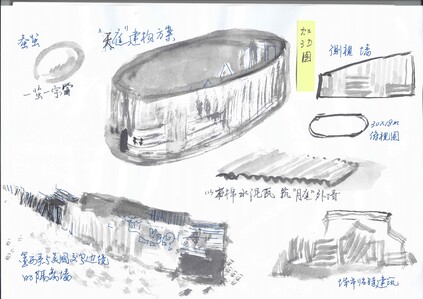The Temple is a monumental installation that bridges notions of eternity, ritual and redemption across religions and cultures. Amidst a darkened interior, a glowing nine meter tall tower is flanked by two rows of silk-covered pyramids beaming light above. The shadows cast by their metal vertebrae onto the ceiling evoke moving clouds and constellations, while the pyramids below are like monuments linking heaven and earth.
Liang created these pyramids by placing his silkworms on their iron understructures, allowing them to shroud the metal in their silk, symbolically embodying life and the sediments of time. The cold metal brings to mind artifice, industry and modernity, and its contrast with the natural softness of the silk brings to mind the Taoist stratagem of conquering the mighty through the weak. The sharp knots interlaced throughout resemble Christ’s crown of thorns from the Crucifixion. This religious connotation is echoed in the iconology of silk itself, which in China contains references to self-sacrifice, generosity, transubstantiation and resurrection. It is further underscored in the layout of the installation, which resembles that of a church interior. Having studied the philosophies of East and West for many years, The Temple and Liang’s other works touch upon themes present across civilizations, reflective of humanity’s shared fate.
Detail pictures:

